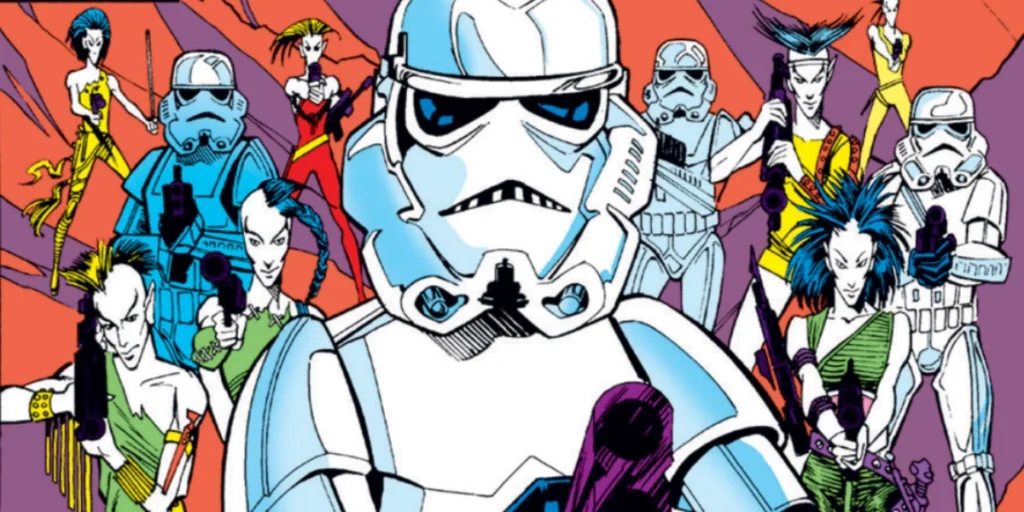
There aren’t all that many book stores left these days, but it’s not uncommon for the larger ones to have an entire section devoted to Star Wars tie-in novels – there have been over 400 published since Splinter of the Mind’s Eye in 1978, with more coming out every year. So it might be difficult to imagine a time when the sum total of printed Star Wars fiction amounted to little more than 10 novels, three of them novelizations of the films. But that’s just how it was during the life of the original Star Wars trilogy.
On screen it wasn’t any better. Sure, there were two made-for-television Ewok spin-off movies, and the short-lived Ewoks and Droids cartoons, all of which were aimed strictly at young children rather than a general audience. And the less said about 1978’s Star Wars Holiday Special, the better (I know what you’re going to say, but that Boba Fett cartoon isn’t as good as you remember).
Between 1977 and 1986, if you had a hunger for a steady supply of original Star Wars stories, your best and only bet was Marvel’s ongoing Star Wars comic book series.
Early Days
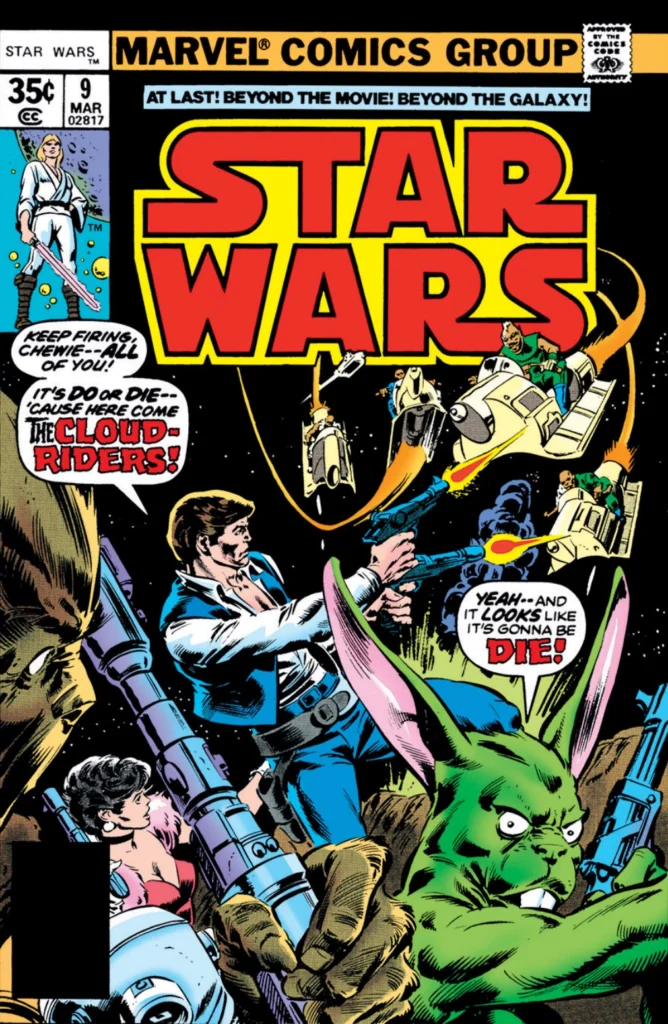
It’s even harder to believe that there was a time when no one knew or cared what Star Wars was. The comic book was initially conceived as a promotional tool to help raise awareness for the original film, with the first issue hitting newsstands six weeks before the film’s premiere in May of 1977. As it turned out, Star Wars didn’t need any help catching the public’s attention, but the comic book series was successful enough on its own that Marvel saw no reason not to keep it going.
With nothing more than one film to go on, the comic book struggled a bit to find its identity, often resorting to a mix of standard space opera tropes and just outright weirdness, not the least of which was a retelling of The Magnificent Seven featuring Han Solo and a six foot tall green rabbit…
The series really comes into its own after the adaptation of The Empire Strikes Back in issues 39 through 44, published between June 1980 and February 1981. With two films to draw from, the creative team now had twice as much material to work with, but presumably also increased restrictions from Lucasfilm, who wouldn’t want the comics to step on any potential story elements that might appear in a third film. And of course, thanks to the sequel’s cliffhanger ending they wouldn’t be able to use Han Solo, arguably the series’ most popular character.
Moving Forward Without Moving Forward
Nevertheless, Marvel’s Star Wars went through a bit of a renaissance under writer David Michelinie and artists Walter Simonson and Tom Palmer. Over the course of 18 issues (barring the occasional fill-in issue to cover production delays), they told a series of stories that continued where the film left off, giving the illusion of moving the story forward while maintaining the status quo.
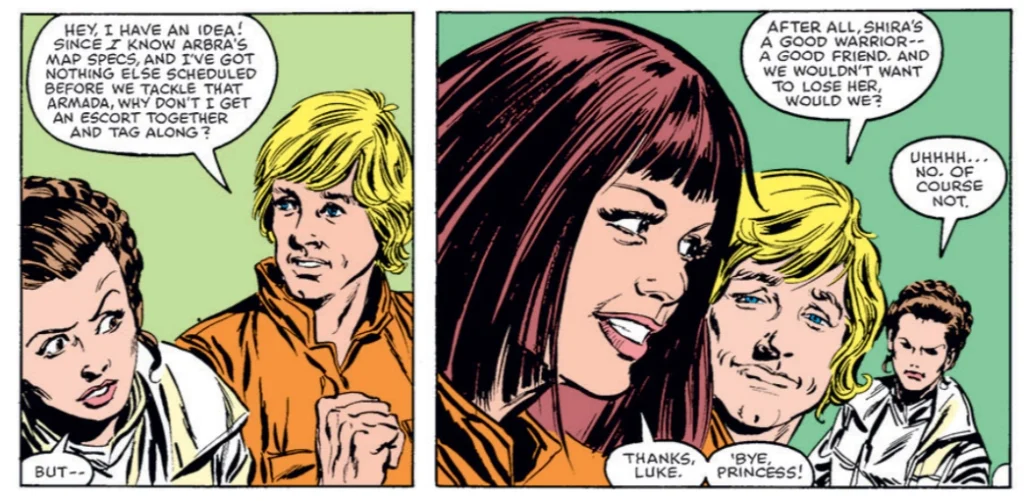
Michelinie and Simonson’s most memorable addition to the Star Wars stable of characters was Shira Brie, a rebel pilot initially meant to provide a romantic interest for Luke Skywalker and a rival for Princess Leia. She soon turns out to be a (spoiler alert) Imperial spy, and manages to frame Luke for her own murder.
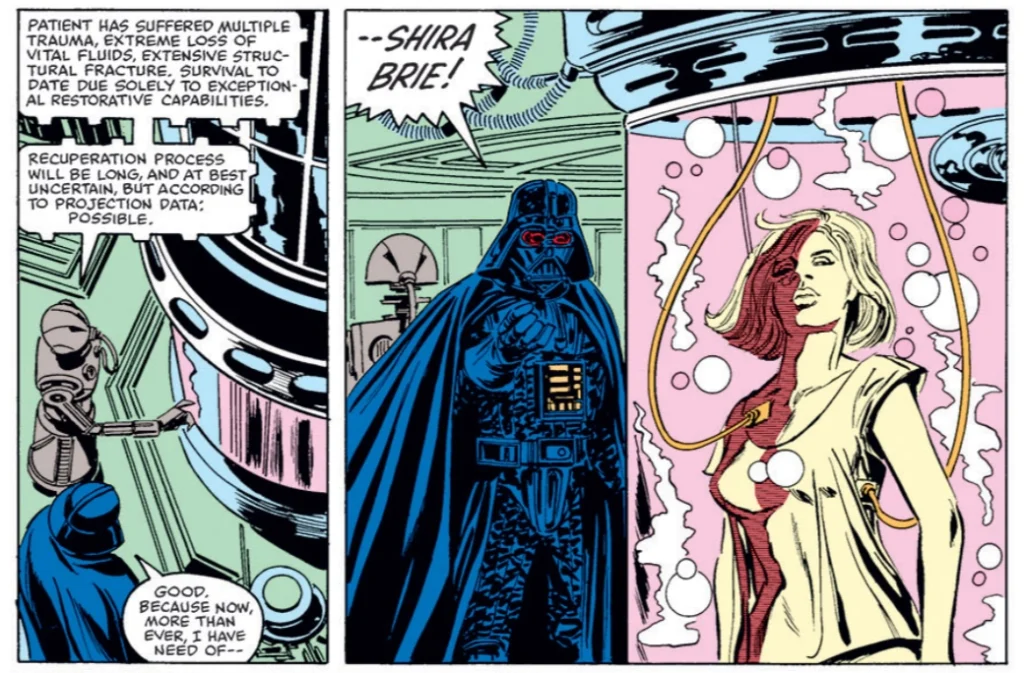
The Shira Brie storyline ended with a less than subtle hint at a return for the character, but with issue 70 writer Michelinie stepped away from the title. He was replaced by Marvel staff writer Jo Duffy, who would write the book all the way up until its end, 37 issues later. Joining Duffy as penciller was first Ron Frenz, then Bob Mcleod, and briefly Tony Salmons and Jan Duursema, with Marvel stalwart Tom Palmer’s inking providing the book with some much needed visual continuity. Palmer would also contribute an occasional stunning painted cover.

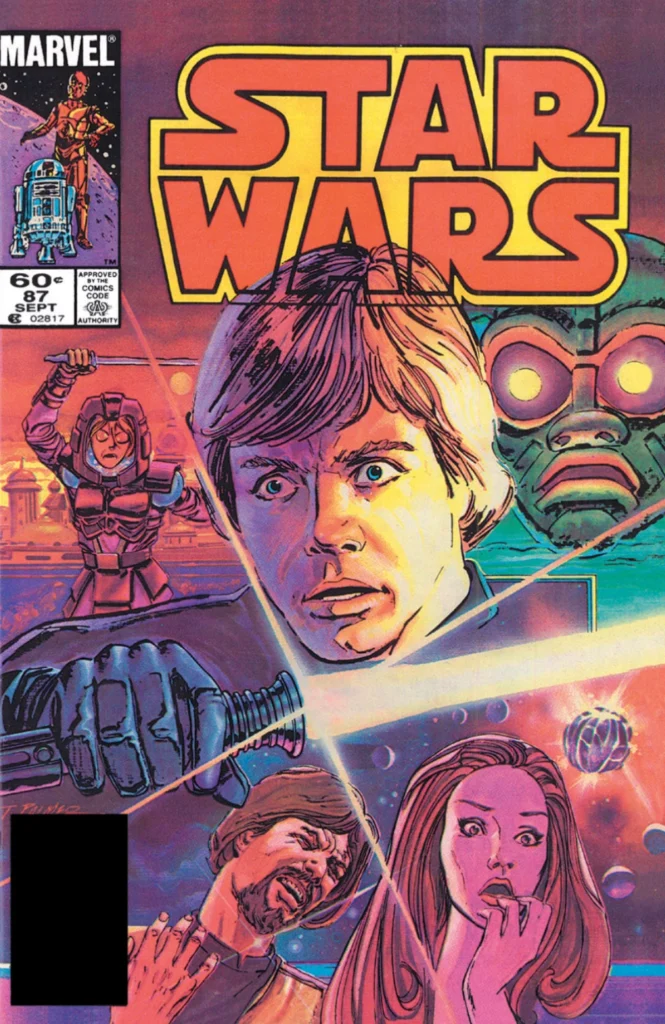
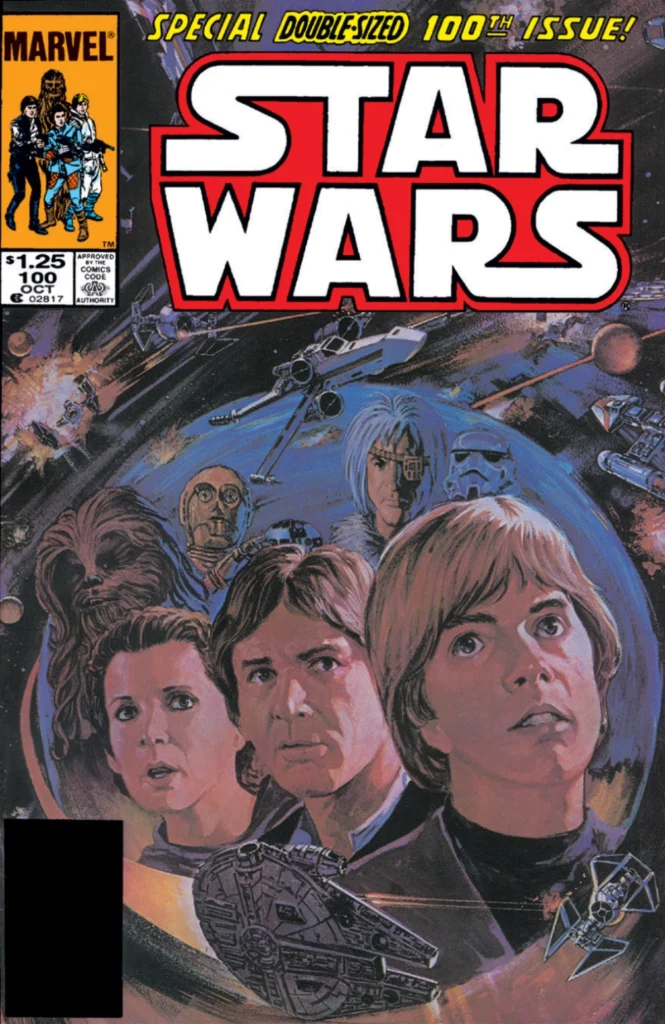
Painted cover art for Star Wars issues 81, 87 and 100 by Tom Palmer. © Lucasfilm.
Jo Duffy appeared to understand that the main appeal of a Star Wars comic book was in revisiting familiar characters. With limits on what she could do with the heroes from the films, Duffy set about creating her own cast of supporting characters. She was great at innocuous introductions – she would often drop a new character into a fairly minor role in a story, only to have them reappear later with a larger part to play. It was a great way to simulate that sense of familiarity that readers would have with Han Solo or Princess Leia, but with characters that she could steer in whatever direction she wanted to.
Some of the more memorable new characters Duffy introduced into the series were Rik Duel, Dani, and Chihdo, a trio of crooks who made Han Solo look like a saint; Kiro, a brash young warrior from an aquatic world with an uncanny resemblance to Luke Skywalker; and Fenn Shysa, a Mandalorian freedom fighter who would cleverly allow the comic book to capitalize on iconic film character Boba Fett’s image and popularity. Kiro and Dani in particular would have large parts to play in the coming storylines, as would the Hoojibs, a race of telepathic rabbit-like creatures who had been a mainstay of the comic since Michelinie and Simonson’s run.
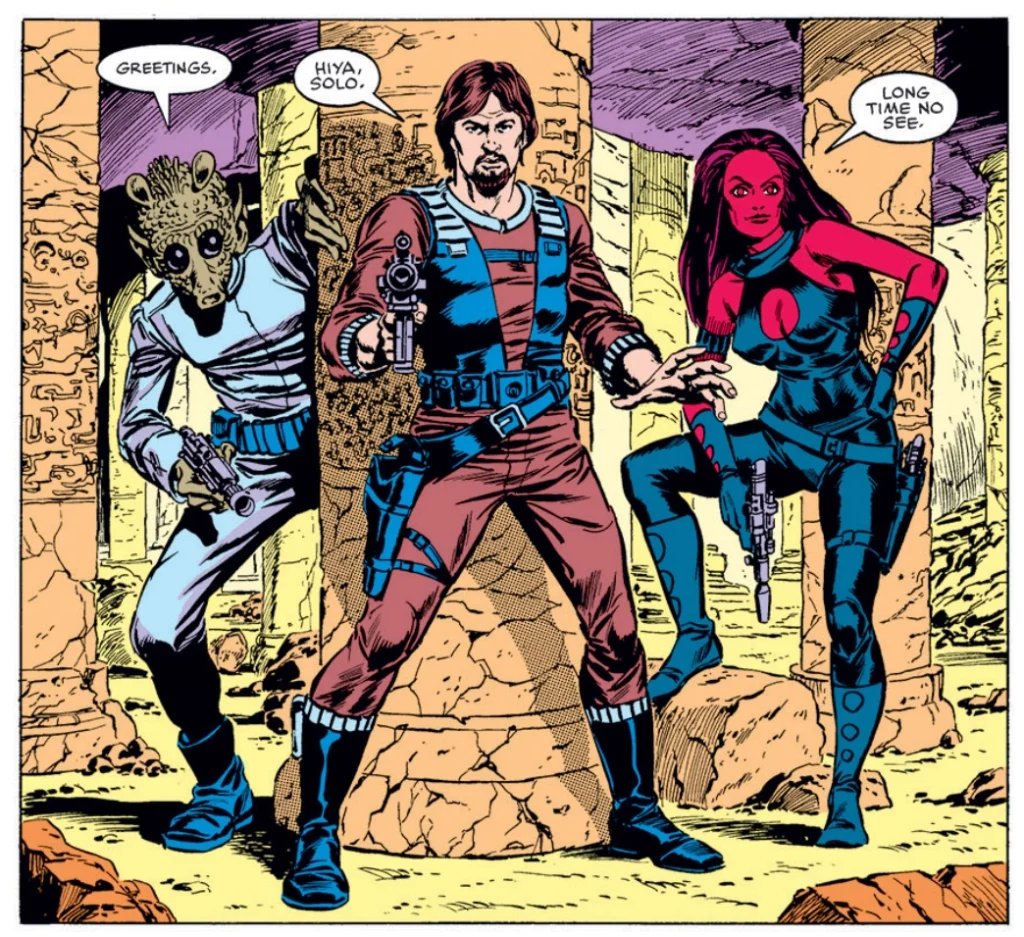
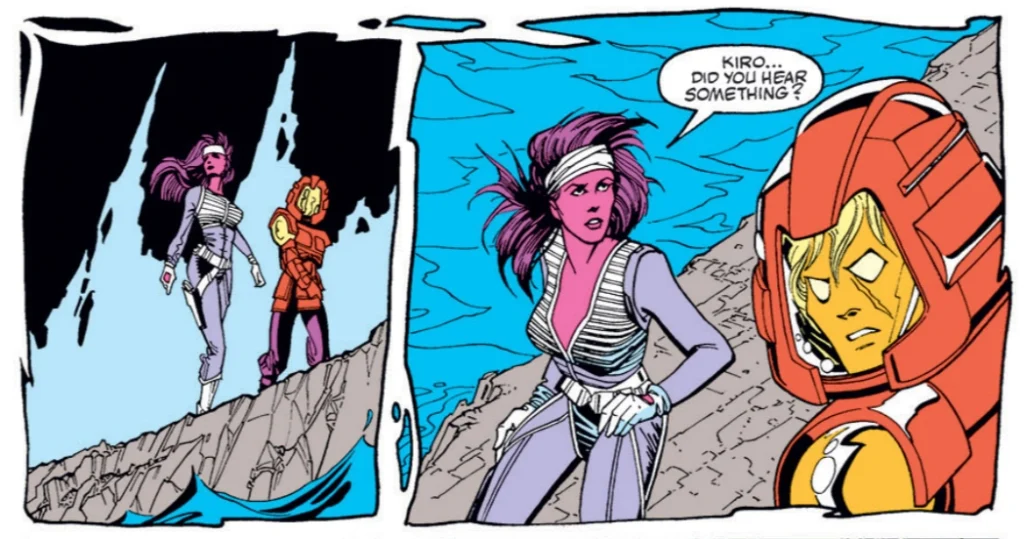
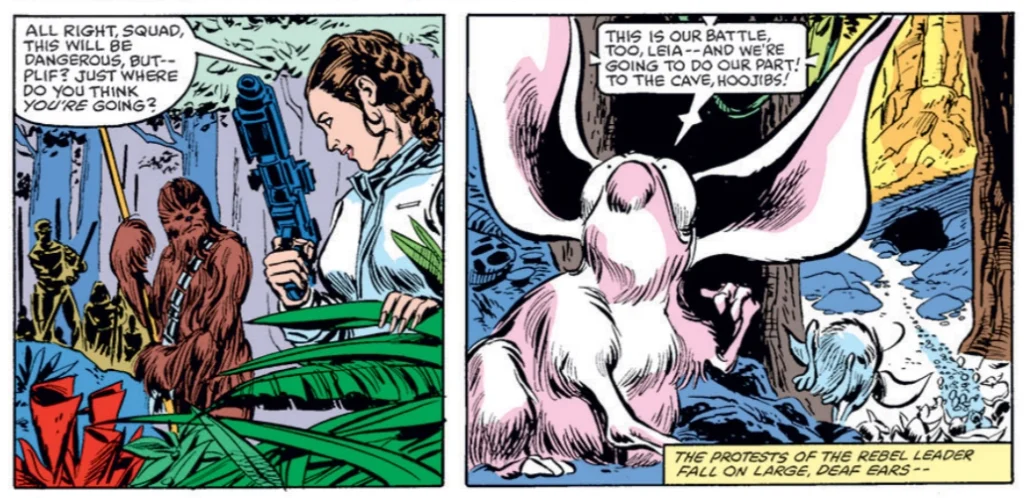
Continuing the Story
The ongoing Star Wars comic book series was a little slow to catch up to the events of Return of the Jedi, released in May of 1983. The end of the movie trilogy seems like it created more problems for the comic’s creative team. With Darth Vader, the Empire, and even minor antagonists like Jabba the Hutt defeated they had lost all their main villains, although they were granted use of Boba Fett for one issue, as long as they promised to put him back in the Sarlaac pit where they found him. But at least they had Han Solo back.
The logical choice was to create a new villain for the heroes to fight, and this came in the form of the Nagai, a race of pale, slender humanoids with preposterous hair who were the spearhead of an invasion force from a neighboring galaxy. Again, Duffy demonstrated her talent for the slow burn, introducing the new villains a little at a time before unleashing them in force, along with a new artist, Cynthia Martin.
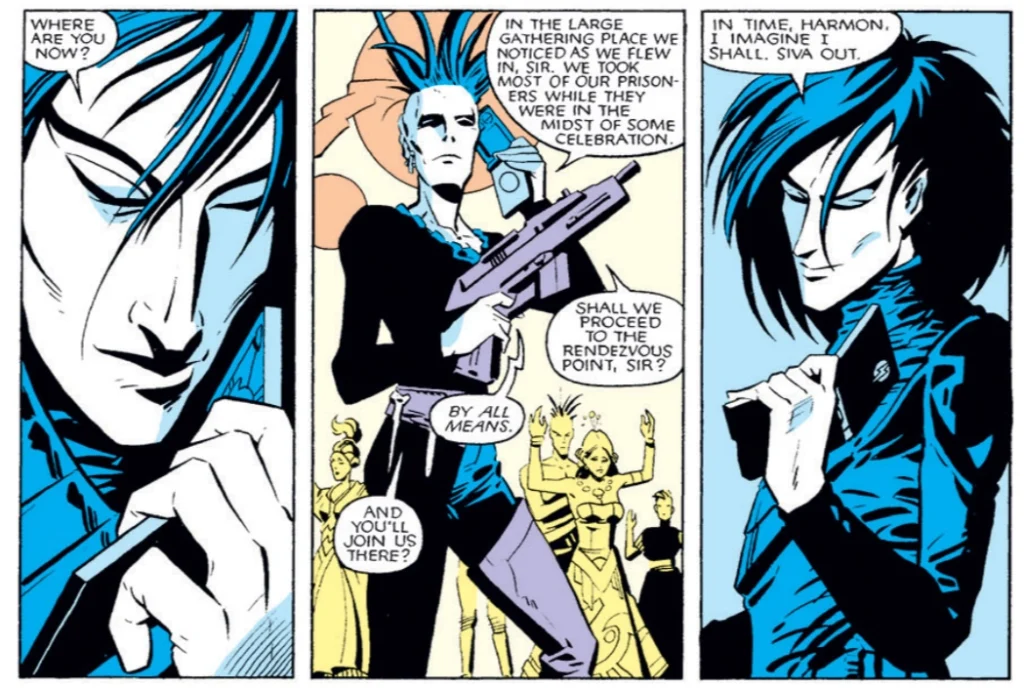
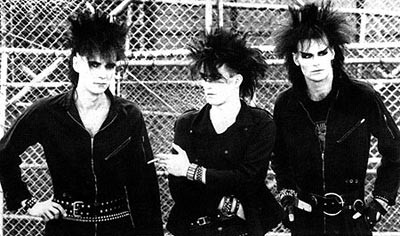
The appearance of the Nagai, with their pale skin and spiky hair, has been attributed to Martin’s interest in Japanese manga and anime. I humbly suggest, however, that their appearance owes just as much to the emerging goth/industrial music scene, characterized by bands like The Cure and Skinny Puppy.
At the head of the Nagai was a returning villain clearly meant as a replacement for Darth Vader: Lumiya, a mysterious figure who initially appeared in a one-off story but soon returned, seeming to have a bone to pick with Luke Skywalker. Lumiya cuts a fascinating figure with her mechanical armor and energy whip, and we soon find out that this is none other than the assumed dead Imperial spy Shira Brie, remade (presumably by Darth Vader and the Emperor) as Jedi-fighting cyborg. The character of Lumiya proved to be so memorable that she made return appearances in several Star Wars novels, long after the end of the Marvel comic book series.
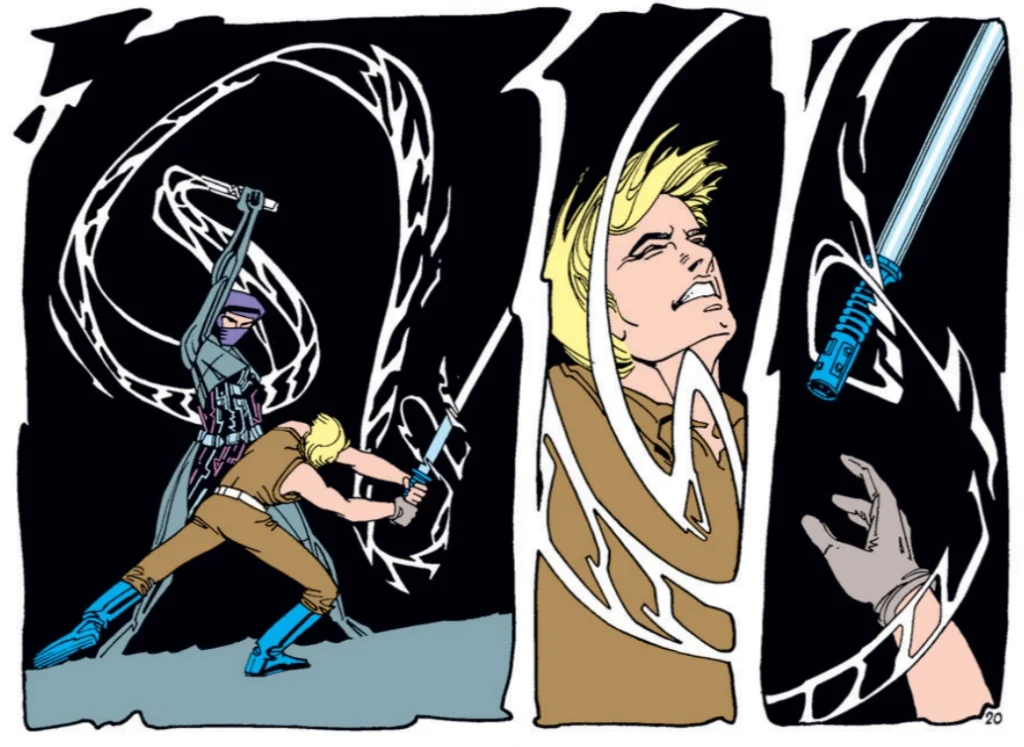
We Interrupt This Program
Writers Jo Duffy and David Michelinie took advantage of the long-form, episodic nature of comics to craft some compelling ongoing storylines, in spite of being hamstrung by the need to stick to the status quo of the films. However, the series was plagued by delays, creating the need for frequent fill-in issues that would interrupt the narrative with a seemingly irrelevant side story. To make matters worse, these fill-ins were often repurposed generic fantasy or science fiction tales with one or two characters hastily redrawn to resemble someone from the Star Wars cast.
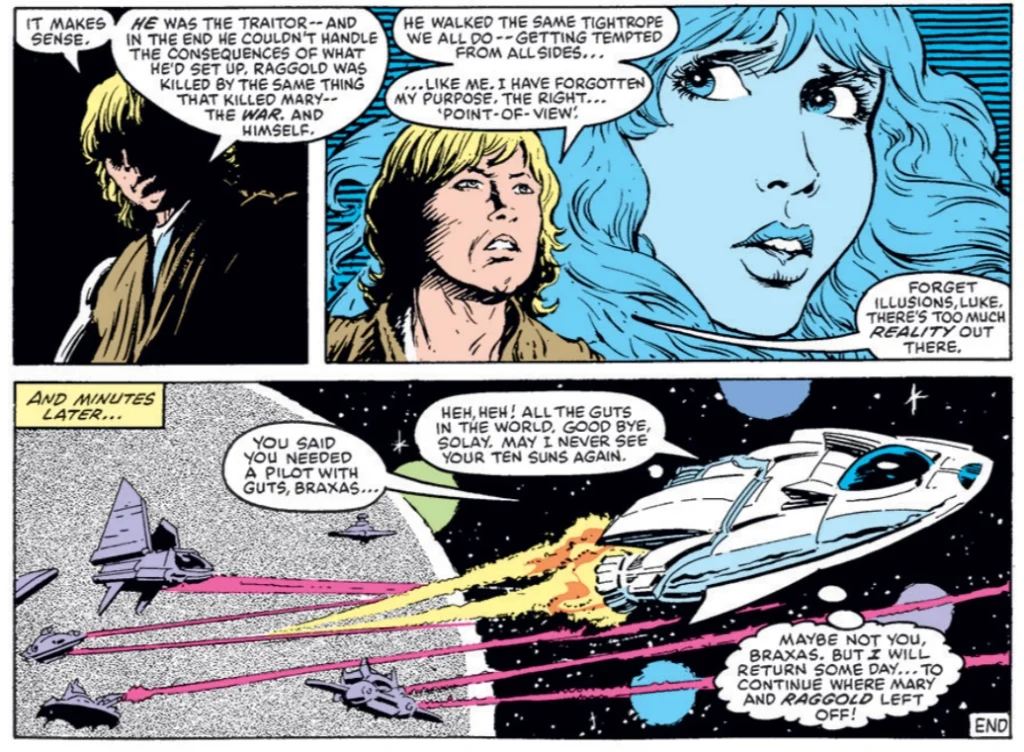
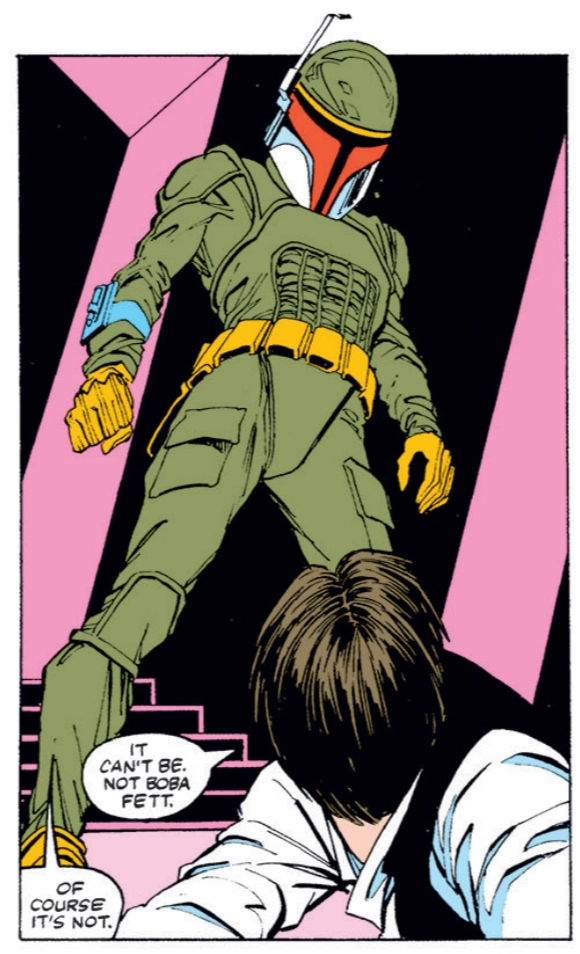
This problem got worse around the anniversary issue 100, the plot of which turns on the betrayal of a character whose introduction we don’t see until issue 101. In addition to throwing the story off, it also ruined what would otherwise have been a great sight gag, where Han Solo thinks Boba Fett has returned before the man in the armor is revealed to be someone else, a fact already made clear in the previous issue.
Possibly as a result of these production delays, the series was changed to bi-monthly status for its final seven issues. Duffy and Martin were clearly expecting more time – the final seven issues rush through an elaborate plot as we are introduced to the supposedly even worse enemy that the Nagai were running from. Unfortunately, without taking the time to introduce these new villains, we didn’t really get a good sense of their menace. And it didn’t help that they were drawn as comically rotund, green-skinned humanoids in what appeared to be 17th century pirate dress.
Matters weren’t helped any by an attempt to introduce some additional comic relief in the form of the Hiromi, a race of cartoonish, bumbling insect-like creatures. The book already had more than its fair share of humorous characters – Lando’s schemes were the basis for many of the run’s lighter stories, and Princess Leia had been saddled with a group of party-boy “attachés” designed to generate a steady stream of “stuffy diplomat needs to relax” gags.
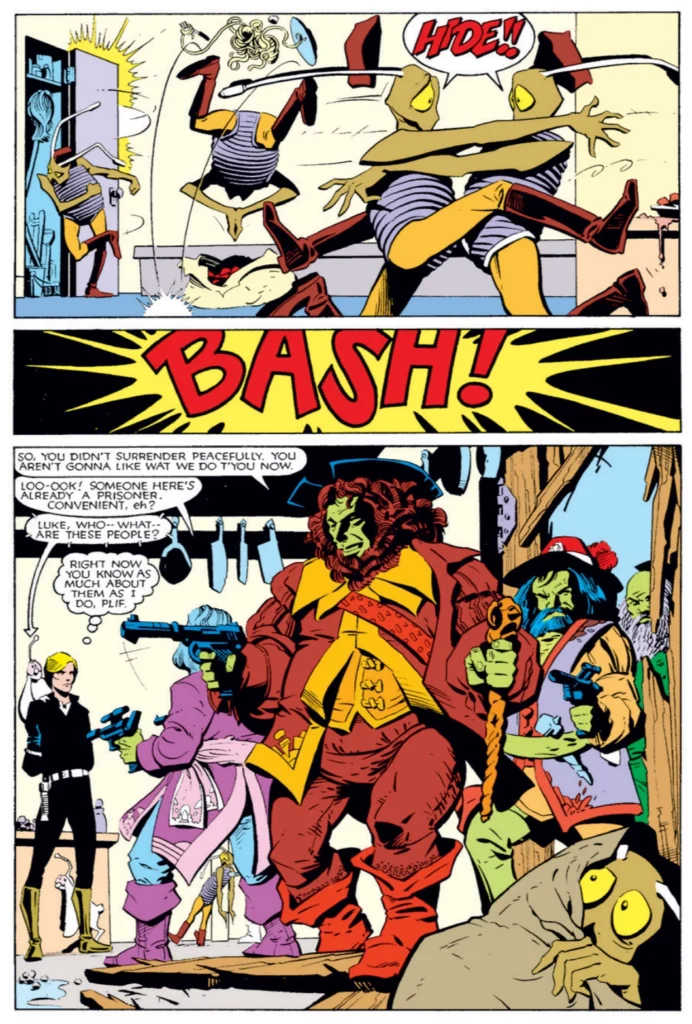
However – and this seems to be a fairly common problem for some Star Wars writers, George Lucas himself foremost among them – Duffy felt the need to lighten the tone even more, perhaps because she had saddled the previously lighthearted character of Dani with some tragedy that made her into a brooder. But, like Lucas with the character of Jar Jar, Duffy confuses humor for clowning, and the silliness starts to distract from the story.
Is That All There Is?
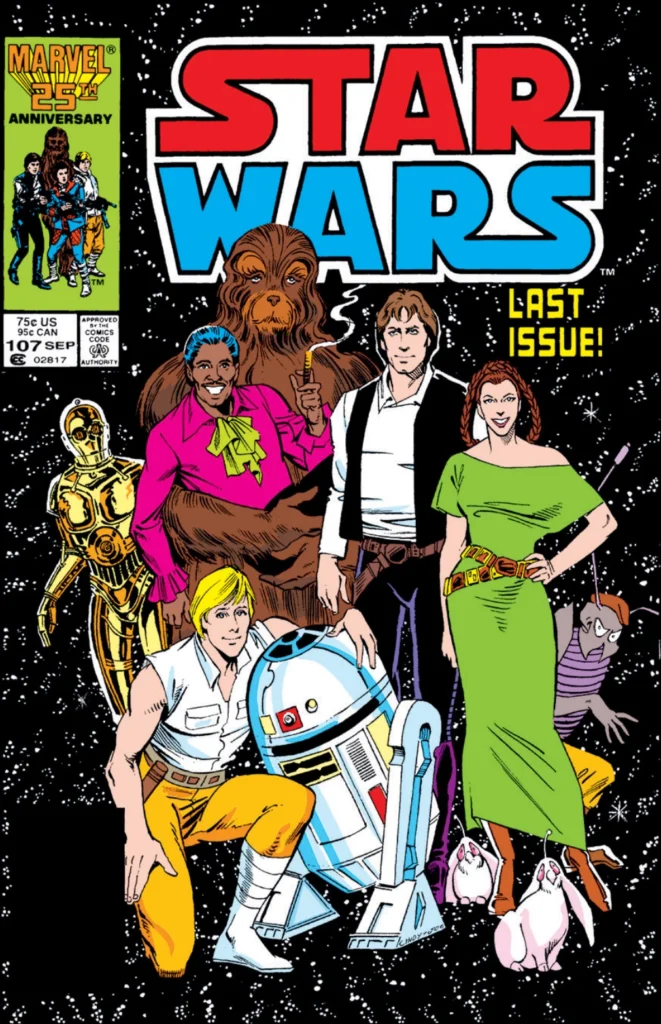
Sadly, due to a rushed storyline and a lot of tonal inconsistency, the final issues of Marvel’s original 9 year run of Star Wars comics are a bit of a mess. The storyline is often hard to follow, with large chunks of the narrative glossed over or missing entirely. The series ended with issue 107 in May of 1986, and while Marvel’s children’s imprint would publish the Ewoks and Droids series for another year, that was it for original Star Wars stories, at least for a while.
With no new movies on the horizon, interest in Star Wars faded. It is interesting to note that during this time, the only major Star Wars product coming out was West End Games’ Star Wars Roleplaying Game, a tool for fans to create their own stories. But that would soon change with the May 1991 publication of Heir to the Empire, a novel by Timothy Zahn that served to re-start the franchise, at least in book form. Dark Horse Comics followed in December with Dark Empire, the first of hundreds of Star Wars comics they would publish over the next 25 years. Marvel reacquired the license in 2015, and there has been a steady flow of Star Wars comics ever since.
While there is no shortage of Star Wars material these days (quite the opposite), it’s interesting to look back at a time when a single monthly comic book was the only game in town. And, given the limitations the writers and artists had to work under, it was a pretty good game at that.
